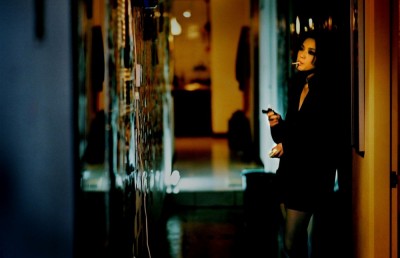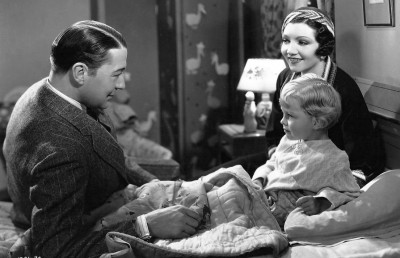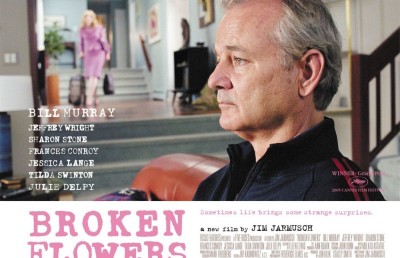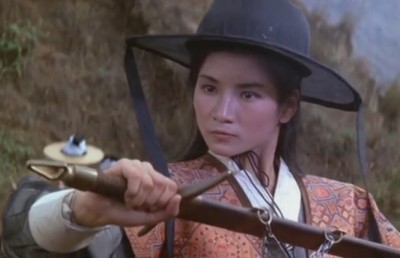Eisenstein, Synaesthesia, Symbolism and the Occult Traditions
Eisenstein's “audiovisual” cinema
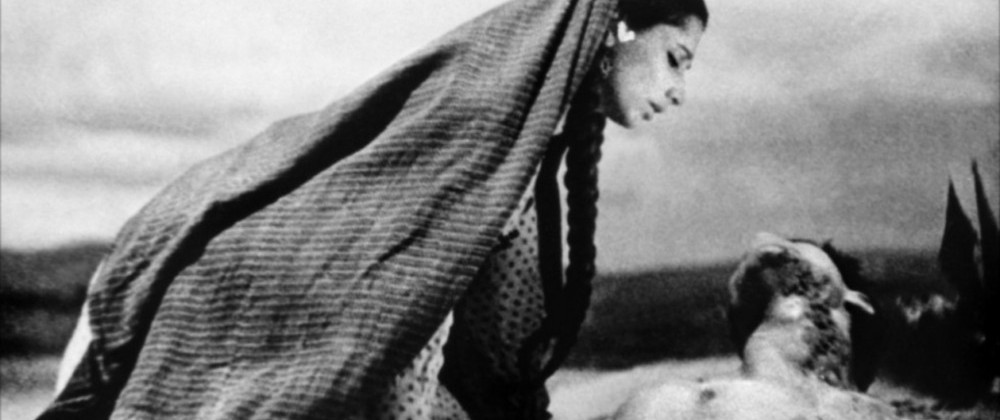
The evidence of Eisenstein’s interest in synaesthesia and the interaction of the senses is present in his library. According to Hakan Lovgren, in the 1930s he began to acquire books by the Russian symbolist poets and writers, including Viacheslav Ivanov, Andrei Bely, Valery Briusov, and Sergei Durylin. [1] A marked interest in alchemy and other occult and hermetic traditions was characteristic of artists in the symbolist movement. However, Eisenstein gives a sardonic account of his early encounter with one of these traditions, Rosicrucianism. When he was billeted in Minsk in 1920, during the Civil War, he attended classes in the disclosures of mysterious rites, explained and presided over by Professor Zubakin, a Rosicrucian bishop practising under the name of Bogori the Second. Eisenstein tells how he was so bored that he fell asleep during the study of the occult traditions of the Cabbala, and the Arcana of the Tarot. Nevertheless he maintains that he kept awake during what he believed was the most important part of the study, the very end: “…it became clear that the initiate was being told that ‘there is no God for God is he.’ Now that was something I liked.” [2] Eisenstein also liked the textbook on the occult that was used in the classes, and which he later bought in one of the second-hand book markets in Moscow. In his library he placed it next to Eliphas Levi’s The History of Magic, [3] on the shelves he reserved for what he called “ ‘the imprecise sciences,’ (magic, cheiromancy, and graphology, of which more elsewhere).” [4] Eisenstein was dismissive of contemporary proponents of the occult tradition, for example the Rosicrucian movement, Rudolf Steiner, and the founder of the Theosophists, Madame Blavatskaya, both of whom had been a passing influence on Kandinsky. [5] But to demonstrate the existence of previous attempts to unite the auditory and the visual, specifically in the form of the combination of music with colour, he quotes from Karl von Eckartshausen’s book, published in 1791, the Disclosures of Magic from Tested Experiences of Occult Philosophic Sciences and Veiled Secrets of Nature: “I have long tried to determine the harmony of all sense impressions, to make it manifest and perceptible.” [6] Eckartshausen explains that he built a clavichord which had glass tubes filled with varicoloured liquids, illuminated from behind by glass candles. The keys of this instrument when pressed would lift to disclose the colours, which would then be covered up again when the notes had died away. He wrote enthusiastically that his clavichord could produce “whole colour chords…just like tonal chords.” [7] Eisenstein then quotes from Eckartshausen’s Theory of Ocular Music, from a little poem he has written with descriptions of various notes and timbres, as well as the colours he imagines synaesthetically:
WORDS: Sadly she wandered, loveliest of maidens…
MUSIC: The notes of a flute, plaintive.
Colour: Olive, mixed with pink and white. [8]
This description resembles an extract from a montage sequence. Here the colours could represent the girl in a white dress, seen against the greenery of the countryside, which is mentioned in the next line: the “flowery meadows.” [9] The colours are now predictably “green, mixed with violet and daisy yellow.” [10] However, in the third stanza, the poem features the girl singing “joyful as a lark,” and the colours Eckartshausen has chosen are more unpredictable and personal, typically synaesthetic: “Dark blue streaked with scarlet and yellowish green.” [11] The dark blue can be imagined as belonging to the sky, but the colours suggested by the singing are totally subjective.
Rimbaud, Baudelaire and Synaesthesia
This surprising example of synaesthesia from 1791, long before such a phenomenon was acknowledged, brings Eisenstein to the much better known and more recent example of synaesthesia in Arthur Rimbaud’s poem, Le Sonnet des voyelles, which he quotes in full. This influential sonnet is also reproduced in his essay On Colour, in which he points out that many forget to read beyond the first line of the poem: “A black, E white, I red, U green, O blue.” [12] As a result, these readers fail to understand that Rimbaud’s correspondences between vowels and colours are “conditioned by very individual forms of imagery,” [13] for example
A is a black corset and over it the flies
Boil noisy where the cruel stench fumes slow,
Shadow-pits; E, candour of mists and canopies,
Shiver of flowers, white kings, spears of the glacial snow… [14]
This highly personal but nevertheless extremely direct technique of synaesthetic correspondences is also used in another influential poem, entitled Correspondances, by Charles Baudelaire, who was the greatest literary influence on the young Rimbaud. [15] This poem became a kind of manifesto for the symbolist movement. [16] In it Baudelaire describes the human experience of nature as crossing “forests of symbols”: “Nature is a temple, in which living pillars utter a babel of words; man traverses it through forests of symbols, that watch him with knowing eyes.” [17] Nature exists in the form of a dark and profound unity, as vast as the night and equally as vast as light. In its oneness, perfumes, colours and sounds echo each other: “Like prolonged echoes which merge far away in an opaque, deep oneness, as vast as darkness, as vast as light, perfumes, sounds, and colours answer each to each.” [18] Baudelaire uses synaesthesia to demonstrate this echoing:
There are perfumes fresh and cool as the bodies of children, mellow as oboes, green as fields; and others that are perverse, rich, and triumphant, that have the infinite expansions of infinite things – such as amber, musk, Benjamin, and incense, which chant the ecstasies of the spirit and the senses. [19]
Baudelaire’s examples of synaesthesia are linked to extreme emotion in the form of “ecstasies of the spirit and the senses.” This idea is similar to Scriabin’s ambition to unite all the senses to induce a state of ecstasy in his final uncompleted composition, Mystery. [20] It is also like Eisenstein’s analysis of the relationship of “‘creative associations’ born of vivid impressions” to emotion and ecstasy, leading to a transcendent state of mind where “‘thought,’ ‘memory’ and even… ‘feeling’ have almost no place.” [21]
Baudelaire derived the idea of correspondences from the Swedish philosopher and mystic Emmanuel Swedenborg (1688-1772). [22] He believed that all material things were in direct correspondence to ideas in the spiritual world: “The whole natural world corresponds to the spiritual world, not only the natural world in general but also in every particular.” [23] Swedenborg believed that in the human form coexisted a spiritual and a natural world: “Consequently, whatever in his natural world, that is, in his body and its senses and actions, comes into existence from his spiritual world, that is, from his mind and its understanding and will, is said to be a correspondence thereof.” [24] It was in describing one of the states of mind that he experienced when he was under the influence of hashish that Baudelaire mentions Swedenborg and his idea of “correspondences”:
the first object which attracts your attention becomes a symbol with meaning. Fourier and Swedenborg, one with his analogies, the other with his correspondences, become embodied in the both the vegetal and the animal which you are perceiving, and, instead of teaching you by means of their voices, they indoctrinate you by form and by colour. [25]
In this fragment of text by Baudelaire, from Les Paradis artificiels, there are several similarities to Eisenstein’s approach to film. The “first object” which attracts the attention and becomes symbolic can be compared to the director’s description of a close-up, a “conjoined unity of seeing and perception – a reflection of reality, refracted through consciousness, and a reflection of reality refracted through the prism of sensual thought.” [26] Baudelaire’s description of indoctrination “by form and by colour” through the use of analogies and correspondences is similar to both Eisenstein’s aims for audiovisual film, and the way he explains his audiovisual methods. One of these methods is directly related to his concept of ‘sensual thought.” It involves reflections of reality refracted through an irrational, superstitious consciousness.
The Black Cat Method
Eisenstein stated that he always set up his shots according to the principle of “a black cat crossing my path.” [27] Aware that he was deeply superstitious, he complained that this predisposition greatly interfered with his life. He admitted that Friday the thirteenth, walking under a ladder, starting something on a Monday, black cats crossing his path – all these things were a problem for him. [28] This superstition was even extended to everyday actions. The mundane act of switching off a light would suggest to him “Departure into Darkness,” a delayed payment, ‘shades of Beggardom.” [29] He realised that this anxiety was caused by his ability to generalise instantly from the most trivial detail. This weakness became a strength in his work in film, as he was able, from a mass of details, to select the one item which most closely realised the general idea of the whole work. [30] He points out that:
in subject and composition, I try never to limit the frame solely by the way things appear on the screen. The subject must be chosen thus, turned this way, and placed in the field of the frame so that, besides mere representation, a knot of associations results that mirrors the mood and sense of the piece. That is how the dramatic style of the frame is created. That is how the drama interweaves with the canvas of the work. [31]
Here the frame of the shot, far from being static and limiting, becomes a dynamic centre of associations and correspondences. All the technical means in film: light, camera angle, the process of montage, is put to work to go beyond representation to reveal “that conceptual and emotional aspect” of what is before the lens at that particular moment, whether what is in the frame are “passions (people, models, actors); buildings and landscapes; or skyscapes.” [32]
Eisenstein’s “black cat” method is based on the workings of his own subconscious mind, drawing on a system of direct correspondences between the daily material world and the immaterial world of thought.
Schopenhauer, Correspondences and Joyce
Eisenstein had already encountered, as a young man, a system of correspondences in the philosophy of Schopenhauer. He was also influenced by his ideas in relation to “typage”, his method of choosing actors for his films. [33] He echoes the German philosopher’s belief that the world of Ideas are direct copies of the Will itself, when he is describing what he calls his photogenic approach to using actors. Eisenstein selected them according to the ideas their appearance suggested to audiences. Mentioning Schopenhauer, he explains that “an idea expressed in its completeness is photogenic; that is, an object is photogenic when it corresponds most closely to the idea that it embodies.” [34] By substituting the word “filmic” for “photogenic”, it is possible to see how Eisenstein’s use of Schopenhauer’s idea of correspondences was at the core of his ambition to realise an “intellectual cinema.” [35]
The idea of correspondences between the material and the spiritual worlds, and between matter and thought is one which exists at the meeting point between philosophy and religion. It is present in the ancient Chinese Taoist tradition, which influenced the Chinese artists who painted the landscapes Eisenstein admired and was influenced by his approach to audiovisual film. The Taoist tradition is also at the basis of the system of synaesthetic correspondences in the ancient Chinese chart, reproduced by Eisenstein in his chapter on the synchronisation of the senses in The Film Sense. [36]
Eisenstein came across a 20th century version of such a chart of correspondences in James Joyce’s master plan for Ulysses, which he found in Stuart Gilbert’s guide to the novel. [37] Eisenstein notes that the colours, substances and artforms are not only interrelated in this scheme but that the structural laws pertaining to each art were used by Joyce in the form of each chapter:
…there is a spectrum which is broken down by chapters into the primary colours, each one of which dominates a chapter. There are metals and minerals, each one assigned to a particular chapter. The same is done in terms of human labour and the arts: a chapter for painting, a chapter for language, a chapter for music and so on, each one embodying in its structure the laws of that form of art to which it is devoted. [38]
This immensely detailed and intricate scheme appears to be in complete contrast to Rimbaud’s chaotic creative principle of the “déreglement de tous les sens,” a deliberate disorientation of the senses. [39] Nevertheless Eisenstein was aware of the chaotic element in Joyce’s synaesthetic scheme for Ulysses. To make his point he quotes the Austrian writer Stefan Zweig, from his article about Joyce’s great novel:
so it is a chaos, but not one muzzily dreamed up by Rimbaud’s drunken brain, smothered in the fumes of alcohol and wrapped in demonic gloom, but conceived by a bitingly witty, ironically cynical intellectual and boldly and purposefully orchestrated. [40]
Rimbaud, Joyce, Eisenstein and the Occult Traditions
However, the contrast between Joyce’s conceptual synaesthesia in his master plan of correspondences for Ulysses, and Rimbaud’s supposed involuntary synaesthesia in his poem becomes reduced when Eisenstein starts to examine its “very individual forms of imagery” more closely. [41] He finds that the poet’s ordered correspondences of vowels with colours could be traced to his unconscious memory of an alphabet with coloured letters, in general use during the period of his childhood, a sort of conditioned reflex. [42] Enid Starkie, the possible source for Eisenstein’s reference here, believes that a more likely explanation for these sound/colour correspondences lies in Rimbaud’s study of alchemy at the time he was writing Le sonnet des voyelles. [43] She points out that the sequence of colours in the first line of the poem: black, white, red, green, blue, are the order of colours which appear during the process that the alchemist uses in the attempt to produce the philosopher’s gold. Starkie also demonstrates that the symbolism of the alchemical colours are related to Rimbaud’s seemingly unrelated poetic images. [44]
Both Joyce and Eisenstein shared a scepticism of their contemporaries who were exponents of the hermetic and alchemical traditions, figures like Rudolf Steiner and Madame Blavatskaya. In Ulysses, Joyce described in his fashion the characteristics of the spirit world as they would have been evoked by an adept during a Blavatskayan séance:
Questioned by his earthname as to his whereabouts in the heavenworld he stated that he was now on the path of prālāyā or return (…) he had heard from more favoured beings now in the spirit that their abodes were equipped with every modern home comfort such as tālāfānā, ālāvātār, hātākāldā, wātāklāsāt and that the highest adepts were steeped in waves of volupcy of the very purest nature. [45]
The effect on the young Eisenstein of his attendance at classes in Rosicrucianism has already been mentioned. In 1920, during the same year as his classes with Bogori the Second in Minsk, he found himself amongst theatre people in Moscow, engaged in deep discussions about theosophical matters. In particular Eisenstein remembers a
conversation about “‘the invisible lotus’ which flowers, unseen in the breast of the devotee.” He also noticed that the attitude the actor Mikhail Chekhov had with regard to theosophy alternated between “fanatical proselytising and blasphemy.” [46] On this occasion, he and Chekhov went out on to the street, where “…dogs frisked playfully around the street lamps. ‘I have to believe there is something in the invisible lotus,’ said Chekhov. ‘Take these dogs. We cannot see anything and yet they can scent something under each other’s little tails…’” [47] Eisenstein felt that this type of cynicism often goes “hand in hand with belief.” [48] However, in spite of the cynicism Joyce and Eisenstein shared with regard to the influential mystical beliefs of this time, they were both inspired by the ideas generated by the extensive use of correspondences, analogies and synaesthesia, characteristic of these ancient occult traditions.
One of Eisenstein’s unrealised colour films was to be about Giordano Bruno (1548-1600), the Italian hermetic philosopher from the Renaissance, who had been a major influence on Joyce. [49] One important aspect of Bruno’s philosophy consisted of his analysis of our thought processes, by an examination of memory and our ability to combine and associate objects and ideas. To undertake this analysis he proposed a new language, an extension of the language of words by means of images. Through time, these images were to be combined and associated into various patterns, to provide new ways of perceiving order in the apparent chaos of the external world provided by our senses. This new language not only combined images, letters, numbers, signs and symbols (any of which could dissolve into another), but it also comprised intentions, words, diagrams, even the sounds of voices. By using complex tables, Bruno stimulated the generation of new aggregates of images and words, in an attempt to show how this process of combination and association is at the centre of the interaction (through time and memory) between the senses and the mind, at the core of the act of thought. [50] It is clear that such ideas, involving the combining and associating of images in time (and occasionally audiovisual images) would have been of interest to Eisenstein, both as a filmmaker, and as someone who wrote his texts very much in a Joycean stream of consciousness mode.
The influence of Bruno on Joyce involved the philosopher’s dialectical theory, which posited an ultimate unity with a “terrestial division into contraries.” [51] Joyce believed that his art was a way of reconciling these opposites in his own mind. This dialectical concept would have caught Eisenstein’s attention too, but as he was being offered the chance of working with colour, it was this latter aspect he specifically mentioned in 1940, in his proposal to the Committee on Cinema Affairs:
…the proposal stipulated a natural “wide spectrum of colours.” The best subject, in that it had the widest range of colours, and was, at the same time, interesting and acceptable ideologically for the leadership, was the highly-colourful (!) Giordano Bruno. Italy of course…Renaissance dress…A fire…52
This was the fire in which Bruno was burnt for heresy by the Catholic Church; perhaps Eisenstein believed that this aspect of the life of the philosopher would have helped to make this film subject “acceptable ideologically for the leadership.” [53] Bruno also believed that God existed in everything and in everyone. [54] This was one of the ideas (as was mentioned above) that Eisenstein liked in his classes with Bogori the Second. It was this type of thinking, considered heretical, which brought Bruno into conflict again and again with both the academic and the ecclesiastical authorities of his time. However, in the context of Stalin’s atheistic state, this should not have posed an ideological problem, especially as there was also a link in influence from Bruno to Hegel to Marx. [55]
Unexpected Influences on Eisenstein’s Ideas About Audiovisual Film
Bruno, Rimbaud, the Russian Symbolist poets and writers, Eckartshausen and Schopenhauer: these are not names which normally surface when Eisenstein’s montage methods are discussed. However, when looking in detail at his ideas on audiovisual montage, these writers and philosophers were clearly an influence on him. A preoccupation with the relationship between the material and the spiritual worlds, and the process of correspondences which is related to the phenomenon of synaesthesia, were significant in their thought and practice, and were also important sources of inspiration for Eisenstein. He found these ideas tremendously fruitful when he confronted the problem of combining music, sound and film, when sound film, or “audiovisual cinema” as he preferred to call it, became technically possible. [56]
Earlier work on Eisenstein by Robert Robertson on Offscreen:
Eisenstein’s Film-Symphony Project, Que viva Mexico! Part 1: Landscape
Eisenstein’s Film-Symphony Project, Que viva Mexico! Part 2: Music
Endnotes
1 Lovgren, Hakan, Eisenstein’s Labyrinth: Aspects of a Cinematic Synthesis of the Arts, Acta Universitatis Stockholmiensis, Stockholm Studies in Russian Literature, Vol. 31 (Stockholm: Almqvist & Wiksell International, 1996), 87.
2 S. M. Eisenstein, Beyond the Stars: The Memoirs of Sergei Eisenstein, ed. Richard Taylor, trans. William Powell, vol. 4, S.M. Eisenstein: Selected Works (London: BFI, Calcutta: Seagull Books, 1995), 78, 80-82.
3 Eliphas Levi, pseudonym of Alphonse Louis Constant (1810-1875), an influential historian of the occult traditions.
4 S.M. Eisenstein, Beyond the Stars, 82-83.
5 Kenneth C. Lindsay and Peter Vergo, Kandinsky: Complete Writings on Art, Vol. 1 (London: Faber and Faber, 1982), 117.
6 S.M. Eisenstein, The Film Sense, ed. and trans. Jay Leyda (London: Faber and Faber, 1968), 74-75. Karl von Eckartshausen (1752-1803) was a German writer and specialist in magic and the occult traditions.
7 Ibid., 74.
8 Ibid., 75.
9 Ibid.
10 Ibid.
11 Ibid.
12 S. M. Eisenstein, Towards a Theory of Montage, ed. Michael Glenny and Richard Taylor, trans. Michael Glenny, Vol. 2, S.M. Eisenstein: Selected Works (London: BFI Publishing, 1991), 258.
13 Ibid.
14 S.M. Eisenstein, The Film Sense, 76.
15 Enid Starkie, Arthur Rimbaud (London: Hamish Hamilton, 1947), 118.
16 Enid Starkie, Baudelaire (Harmondsworth, Middlesex: Penguin Books Ltd., 1971), 12.
17 Francis Scarfe, ed., Baudelaire (Harmondsworth, Middlesex: Penguin Books Ltd., 1972), 36.
18 Ibid., 37.
19 Ibid.
20 Leonid Sabaneiev (Scriabin’s biographer) describes the composer’s aim in his Mystery whereby a synthesis of the arts would be “united in one work, whose ambiance conveys such a great exaltation that it must absolutely be followed by an authentic ecstasy, an authentic vision of higher realities.”(Wassily Kandinsky, Franz Marc eds., The Blaue Reiter Almanac, 130-131).
21 S.M. Eisenstein, Beyond the Stars, 614.
22 Enid Starkie, Baudelaire, 260-264.
23 Emanuel Swedenborg, Heaven and Its Wonders and Hell : From Things Heard and Seen (London: The Swedenborg Society, 1989), 60.
24 Ibid., 61.
25 F.-F. Gautier, ed., Oeuvres complètes de Charles Baudelaire (Paris : Editions de la Nouvelle Revue Française, 1921, reprint of original 1869 edition), 236 (my translation).
26 S.M. Eisenstein, Beyond the Stars, 478.
27 Ibid., 30.
28 Ibid.
29 Ibid., 35.
30 Ibid., 36.
31 Ibid., 30.
32 Ibid., 30-31.
33 S. M. Eisenstein, Writings, 1934-47, ed., Richard Taylor, trans., William Powell, vol.3, S.M. Eisenstein: Selected Works (London: BFI Publishing, 1996), 7-12.
34 S.M. Eisenstein, Writings, 1922-34, ed. and trans. Richard Taylor, vol.1, S.M. Eisenstein: Selected Works (London: BFI; Bloomington and Indianapolis: Indiana University Press, 1988), 56-57.
35 S.M. Eisenstein, Writings, 1934-47, 19.
36 S.M. Eisenstein, The Film Sense, 79.
37 S.M. Eisenstein, Beyond the Stars, 663.
38 S.M. Eisenstein, Towards a Theory of Montage, 195.
39 Enid Starkie, Arthur Rimbaud, 129.
40 S.M. Eisenstein, Towards a Theory of Montage, 198.
41 Ibid., 258.
42 Ibid., 364-365.
43 In the fourth verse of the Voyelles sonnet, Rimbaud associates “U” with “Lines printed by alchemy on the great brows of the wise.” (The Film Sense, 76).
44 Enid Starkie, Arthur Rimbaud, 133-135.
45 James Joyce, Ulysses (Harmondsworth, Middlesex: Penguin Books Ltd., 1971), 299-300.
46 S.M. Eisenstein, Beyond the Stars, 83.
47 Ibid.
48 Ibid.
49 Richard Ellmann, James Joyce (Oxford: Oxford University Press, 1965), 61, 144.
50 Hilary Gatti, Giordano Bruno and Renaissance Science (Ithaca and London: Cornell University Press, 1999), 191-193, 195, 200, 203
51 Richard Ellmann, James Joyce, 61.
52 Ibid., 671, 870n.
53 Ibid.
54 Hilary Gatti, Giordano Bruno and Renaissance Science, 113, 142.
55 Ibid., 114.
56 S.M. Eisenstein, Beyond the Stars, 657.


